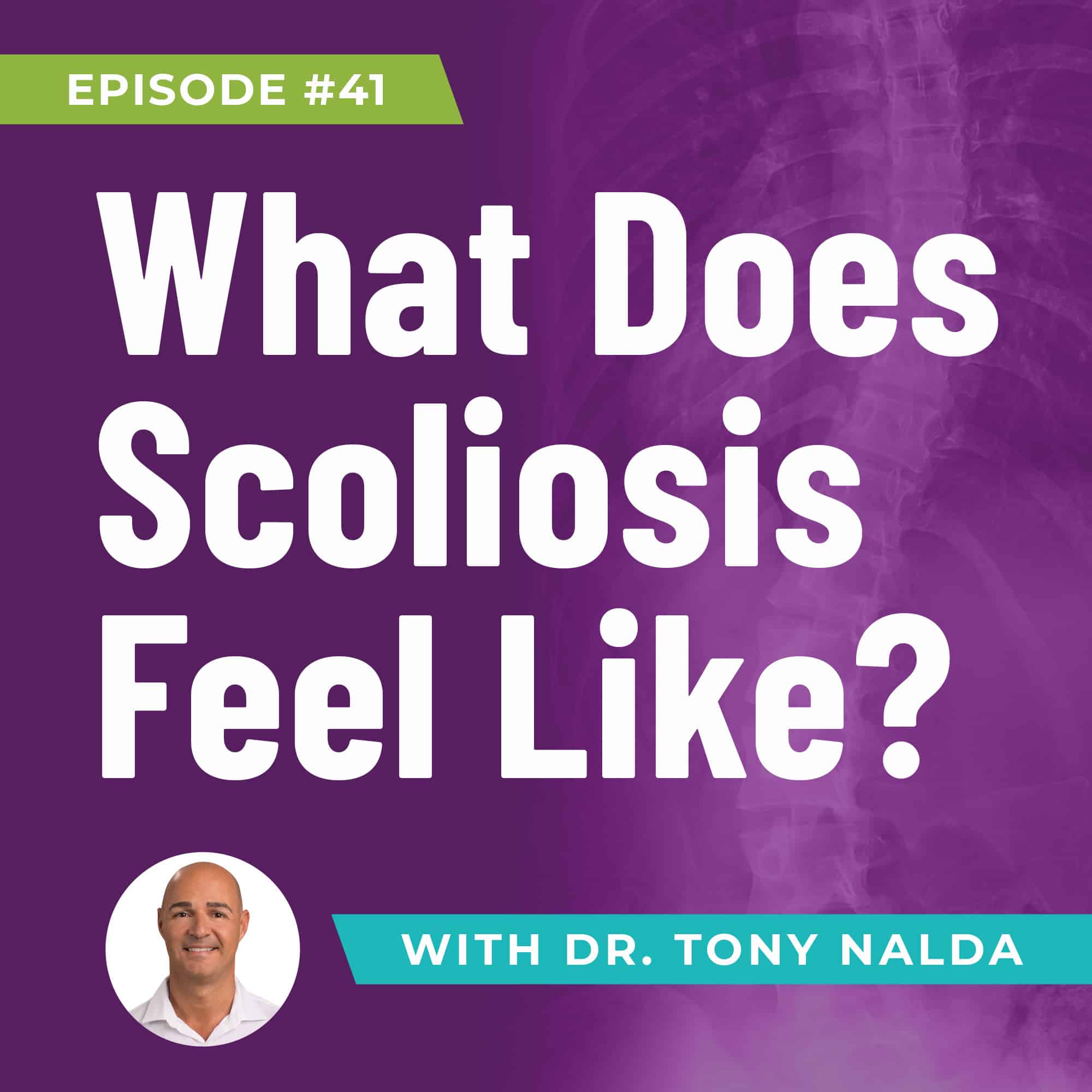Episode 41: What Does Scoliosis Feel Like?
Understanding the unique factors that can influence pain in scoliosis.
The diagnosis of scoliosis is a diagnosis of a structural X-ray, meaning that there's a curvature in the spine that could be measured objectively using a Cobb angle to determine the degree of scoliosis. When people talk about scoliosis, they normally talk about the way it feels because the feeling of scoliosis could be very different depending upon the patient. But we know scoliosis is defined as a curve that's 10 degrees or greater with rotation.
Scoliosis can be classified based on the severity of the curvature.
- Mild scoliosis - 10 to 25 degrees
- Moderate scoliosis - 25 to 40 degrees
- Severe scoliosis – 40 degrees or greater
Each case is unique and how it could feel will depend based upon multiple factors:
- Location of the curve
- Severity of the curve
- Patient Age
- Flexibility of the patient
Can scoliosis cause pain?
The answer is maybe. It's really a big maybe because in lots of cases, it doesn't cause pain but in lots of other cases it can. Mostly, when we look at adolescents with scoliosis, these are patients that are below skeletal maturity. For girls, normally age 16 or less, and for boys between 18 years and less, these kids do not feel pain no matter what size the curve is. If they feel pain, it's normally a very mild and very dull ache at the site of curvature. If adolescent feels pain, we normally think of that as being a red flag for possibly another condition or another injury that could be causing their pain, especially if they have night pain or they have pain when they're sleeping or pain while they're exerting themselves or any kind of numbness or radiating pain out into their extremities, any type of neurological type of pain, we’re normally only concerned of something else occurring in the spine, and normally we're looking for other issues that may or may not be associated with their scoliosis.
If we see adolescents with pain, we're normally thinking what else could be causing it. However, when it comes to adults, almost always they will start to feel pain as a result of their scoliosis at some point in their life because what's causing the curve to progress is compression of the gravity over time and this aggravates the tissues and the nerves and the discs in the spine, which will eventually lead to pain.
Can patients feel stiffness as a result of scoliosis?
This is common in both age groups. This can happen in adolescent or in adult cases. This tends to happen not because of necessary age or compression. This is normally related to the size of the curve, so we know the bigger somebody's curve is, the more likely they are to feel stiffness and rigidity at the site of the curve.
For more information about this, please check Dr. Tony Nalda's podcast.
Artlist.io 847544
Podcast: Play in new window | Download
Subscribe: RSS
Dr. Tony Nalda
DOCTOR OF CHIROPRACTIC
After receiving an undergraduate degree in psychology and his Doctorate of Chiropractic from Life University, Dr. Nalda settled in Celebration, Florida and proceeded to build one of Central Florida’s most successful chiropractic clinics.
His experience with patients suffering from scoliosis, and the confusion and frustration they faced, led him to seek a specialty in scoliosis care. In 2006 he completed his Intensive Care Certification from CLEAR Institute, a leading scoliosis educational and certification center.
About Dr. Tony Nalda
 Ready to explore scoliosis treatment? Contact Us Now
Ready to explore scoliosis treatment? Contact Us Now








